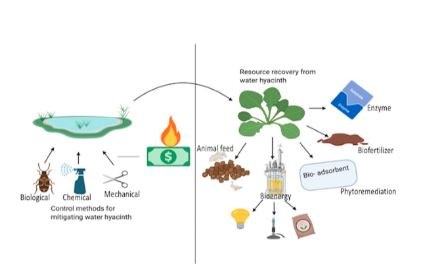

23rd June 2022 (6 Topics)
Context
Due to the demand for woven baskets, cups, plates, boxes, and other cottage industry products being high in West Bengal, the noxious aquatic weed is used to make hand-woven products.
About
About the Aquatic weed
- Water hyacinth, scientifically known as Eichhornia crassipes Mart. (Pontederiaceae), is an aquatic weed common in waterbodies across South Asia, including India.
- This is not an indigenous species but was introduced to India during the British colonial rule as an ornamental aquatic plant from South America.
- The plant produces beautiful purple flowers that have high aesthetic value.
- This simple, floating aquatic plant, unfortunately, is also an obnoxious weed that has been suffocating surface freshwater sources like rivers, rivulets, streams, ponds, dams, and lakes.
- It makes the waterbodies unsuitable for the commercial fishery, transportation, and recreation.
- The plant is a prolific vegetable matter-producer and has the ability to choke out any closed water body at an astonishing rate.
- This cuts off sunlight as well as reduces the oxygen level in the water, making it unfit for comercial use.
|
What are weeds?
Methods of Weed Control
|
Used for cottage industry products
- West Bengal has made an outstanding example by utilizing this obnoxious aquatic weed plant to develop a small-scale cottage industry that is both financially rewarding as well as environmentally friendly in approach.
- Cottage based Industry refers to small manufacturing units producing goods and services using conventional and low-technology methods.
- An example of the cottage industry is the locally produced handicrafts and textiles, which are still the backbone of many rural economies around the globe.
Other uses
- The plant has been used as a bio-fertilizer.
- Making home cleaning brooms
- Good phytoremediation species
- preparing a biodegradable paper
Advantages
- Generating employment
- Promoting local trade and art
- Sustainable use of resources
- Biodiversity Conservation
- Promoting conservation of waterbodies
- Boosting economic growth in the country
More Articles




